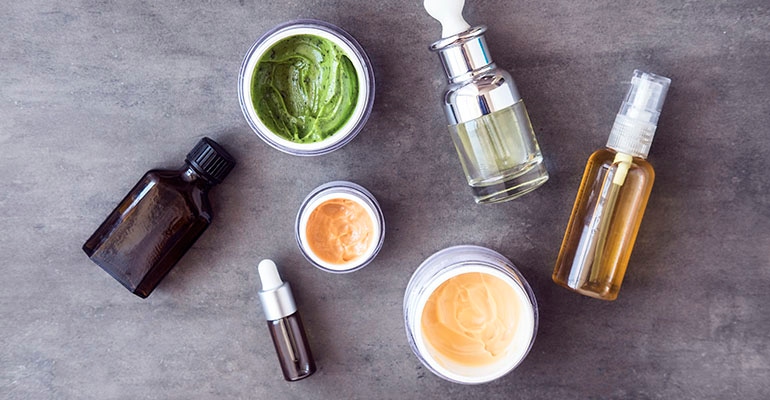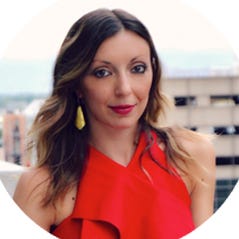We caught up with the pros from PCC Community Markets, EO and Protect Our Breasts to get their insights on product education, retailing and what's next in the natural and organic personal care industry.

As consumers seek out natural alternatives in every aspect of their lives, the natural and organic personal care industry is going strong. We talked with three leading experts who bring unique perspectives regarding the future of the industry and uncovered what they had to say about indie beauty, sustainable packaging, retail standards and so much more.
Meet the experts
 Terry DeBlasio, HBC Merchandiser, PCC Community Markets
Terry DeBlasio, HBC Merchandiser, PCC Community Markets
 Cynthia Barstow, Marketing Faculty, University of Massachusetts, Amherst; Founder and Executive Director, Protect Our Breasts
Cynthia Barstow, Marketing Faculty, University of Massachusetts, Amherst; Founder and Executive Director, Protect Our Breasts
 Susan Griffin-Black, Co-founder and Co-CEO, EO Products
Susan Griffin-Black, Co-founder and Co-CEO, EO Products
Have we reached a tipping point in mainstream awareness of cosmetic chemicals? If so, why?
Cynthia Barstow: Organic and natural products retailers such as Whole Foods Market’s Whole Body and small independents that are highly respected in their communities like Cambridge Naturals in Boston laid the groundwork. More recently, new clean beauty stores such as Credo have expanded the access and added to the awareness. As the head of an advocacy group for a Safer Marketplace, I know that the conversation falls on deaf ears unless there are convenient and inexpensive purchase options. Swipe ups on social are an additional opportunity.
Terry Deblasio: I see movement, but not a tipping point. I think natural products retailers have to work hard to uphold standards on their shelves. Consumers are confused by the ingredients in their products, so they rely on others to vet products. If we don’t do it as retailers, the customers assume it’s a clean product. And brands do not call out their “bad” ingredients, only the ones that sound “natural.”
How has PCC developed and evolved these standards?
TD: When I came to PCC in 2015, the company already had a long list of unacceptable ingredients, but it was a comprehensive list that included food ingredients, which can have different standards from skincare. For instance, we don’t allow hydrogenated oils in food, but in skincare they are acceptable. We updated the list in 2016 to include more than 500 ingredients that are not allowed in our Health and Body Care department.
New ingredients come to market all the time, but it’s not always clear how safe or effective they are, and new ingredients can be especially hard to vet. We pride ourselves on the in-house research we conduct, and we now have a member of our Social and Environmental Responsibility team who specializes in cosmetics ingredients. Our team is committed to thoroughly reviewing and testing what we put on our shelves so our shoppers can trust they are getting a safe and quality product.
How do you know if products are truly clean and effective, and how do you identify greenwashing?
TD: First is trust and transparency. Do we have history with the company, and have they been truthful in our dealings? Have we been to their facility? Do they provide information when we ask for it? I also look at some of the raw ingredients websites to see if they have posted information about ingredients used in a new formulation, to understand the composition and manufacturing process a little better. And we learn a lot from the “sniff test.” Does it smell like essential oils? If not, that makes us pause. Also, if a product performs much better than other products with a similar ingredient profile, something is not right. For example, if a lotion has more “slip” (glide) than similar products, is there unlisted dimethicone in it?
What issues are on the minds of high school and college students today that weren’t on their radars several years ago?
CB: Students are experiencing anxiety levels that I have not seen in my nearly 30 years of teaching at the university. I think it is a new aspect of the next generation we must consider when sharing what can be frightening information. In our case, it is chemicals linked to breast cancer. As we find with climate change, denial is often the coping mechanism when overwhelmed. We work hard to make digestible tips fun, engaging and cool.
How can cosmetic brands successfully connect with—and earn the trust of—this new, vocal consumer?
CB: Since social media has ramped up the comparisons, students seem to seek out influencers who they find authentic and trustworthy for their information. Beauty influencers, in particular, have significant impact as our Gen Z community searches for the best options. These anecdotal observations from our recent Protect Our Breasts Leadership retreat seem to be consistent with statistics about the generation. Of course, we invite organic brands willing to work on safer packaging to partner with us—sharing samples on our campuses and/or being featured on our social platforms.
We often discuss what’s in a product but what about a product’s packaging? What are some innovations that have already hit the market—and what’s in your crystal ball?
Susan Griffin-Black: EO was originally produced in cobalt glass packaging and later migrated to 100% post-consumer resin (PCR). Later this year, Everyone is doubling down on being the sustainable leader in its space by launching 100% PCR (post-consumer resin) amber bottles. In doing so, no virgin plastic will be used in the brand’s bottle supply chain. Everyone's formulations are still made from the same high quality, high-value ingredients for the whole family. We are committed to offering refill/bulk sizes so that PCR bottles can be used multiple times.
TD: My crystal ball is telling me that someday soon we will restrict packaging on our shelves in the same way we restrict ingredients. We are seeing some movement here already but walk down the aisles of any store that carries body care, you see a lot of plastic and extra packaging and extra promotional materials. I’m excited to see sugar cane-derived plastic, although it’s not a perfect solution, and is only commercially compostable. But there are other opportunities, such as more concentrated product, that can also have an impact on sustainability.
CB: Four years ago, I was fortunate to speak at Expo West on the chemicals in packaging that leach into products. There were a lot of deer-in-the-headlight looks from the audience. The idea that the chemicals used to make plastics or adhesives or liners could migrate from the package into the physical product and then into the bodies of consumers was a leap. The science was there, but the industry was not yet. Unfortunately, it still is a difficult concept for many.
At Expo East almost two years, Protect Our Breasts introduced a list of chemicals to avoid, developed by major global brands and packagers including Nestle. We asked our partners to have their packaging suppliers sign an affidavit saying none of the chemicals of concern were used in the packaging. Virtually no one could sign. We realized we needed a new way to encourage the supply chain to improve.
Thankfully, Katherine DiMatteo is a Protect Our Breasts advisor and her connections and expertise helped us to devise a commitment approach where companies begin the conversation with their suppliers as a first step. Everyone needs to be a part of the movement or no one will have viable options to choose from. We are excited to say we are expanding our partnerships significantly now. We have a Facebook page and newsletter for Safer Packaging to share information and progress.
What’s a trend or opportunity in the natural and organic personal care industry that you’re most excited about?
SGB: Multi-purpose products that enhance and simplify our lives. Hot water is good medicine; taking a bath is an accessible and beautiful way to care for yourself so you can better care for others. Also, of course, the reduction and reuse of plastic.
TD: The indie beauty movement is terrific. It levels the playing field because any company can establish itself via the internet. Many of these companies have taken risks that the established companies could not do or could not do quickly. Another trend that has not grown to potential yet is beauty from within. We saw huge growth of collagen products, but there are other ingredients that can help us to retain our healthy skin. Now we also are seeing some companies use internal ingredients on the skin, such as probiotics.
How does accessibility factor into your mission?
SGB: Everyone brands is founded on respect for its customers, its employees and the planet. With our interconnectedness in mind, Everyone believes that every person has the right to best-quality ingredients at a reasonable price point. It starts with pure essential oils, and every other ingredient added to our products must adhere to those standards of purity, efficacy and safety.
What are some of the challenges that come with delivering on your sustainability promise?
SGB: Curating and qualifying essential oils is a big one. We have spent the last 25 plus years choosing plant species and distillation and understanding and supporting sustainable harvesting practices with growers all over the world to support the standards and practices that we have developed. Essential oils are unique and finicky and not always easy to incorporate into formulations. They are also more expensive than synthetic fragrances.
Achieving zero waste manufacturing and B Corp has also been a good challenge. We are makers in one of most expensive places in the world now to live and work. It’s our community and we may sacrifice margin and profitability for our location and our specific and sustainable choices. It’s a conscious choice to align people, place, product, planet, purpose and more.
Whether about safety, ingredient sourcing or packaging, what does this industry need to do to educate, and not confuse or scare, the consumer?
TD: Transparency! How is that ingredient derived, and how does the process affect our bodies and our earth? And don’t use ingredients that confuse or scare your consumers. Do you really need that ingredient, or do you need to educate your consumer about the look or feel of a product that has only clean ingredients? We don’t expect our customers to know what every ingredient is or what it does, but it should be easy for us as gatekeepers to find out and understand.
CB: Not scaring this next generation is critical. Authenticity and transparency are essential. Using chemical names is not challenging for Gen Z any more than acetaminophen or ibuprofen was in years past. Tell them the truth, give them options and do it in a fun and upbeat way.
SGB: Provide education and information to give people a way to make empowering choices for themselves and their families. It is really the job of each and every maker/manufacturer to be ethical, educated and transparent for the highest well-being for all.
About the Author(s)
You May Also Like




